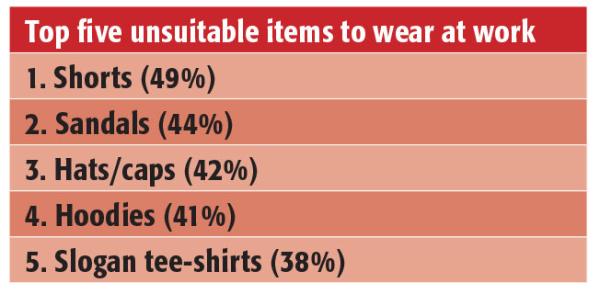09 February 2018

The research indicated that both men and women ‘dress down’ for work in the UK at their peril. A fifth (20 per cent) of workers have been told they look ‘tired’ when they have dressed casually, with a further 13 per cent saying they have been asked if they were ill. SOURCE: www.totaljobs.com
IT workers are being put through “heightened” stress due to a lack of clarity around what they are expected to wear at work, according to new research.
In a survey of 500 employees in the IT sector, jobs board Totaljobs reveals that the average worker spends five months of their life thinking about what to wear to work. It also says those within the sector will spend an average of £54 per month on work clothes – that’s equivalent to £648 a year.
The study found that 63 per cent find it difficult choosing what to wear for work, with 32 per cent saying that the lack of a dress code leads to stressful decisions. A quarter of workers said that they feel pressured to dress a certain way because of company culture, while a further 24 per cent said they are pressured by their managers.
The study also suggests that IT staff are having to put up with unwanted opinions and comments when deciding what to wear to work. Totaljobs says this appears to be a root cause of much of the stress.
For example, a third of workers said they have been subject to unwanted comments about their appearance at work, 20 per cent of which have been from the opposite sex.
But overall, 13 per cent of those polled believe there is a lack of clarity in the workplace about a company dress code, and 12 per cent have absolutely no sense of what management wants them to wear.
“We hope that by revealing these findings, employers begin to understand how important it is to outline exactly what is expected in terms of the attire their employees wear to work,” says Totaljobs HR director David Clift.
“Ideally, this would contain specific guidance [to] help both male and female employees feel more comfortable in what they wear at work. We are keen that employers actively look at ways to develop a gender-neutral dress code.”










